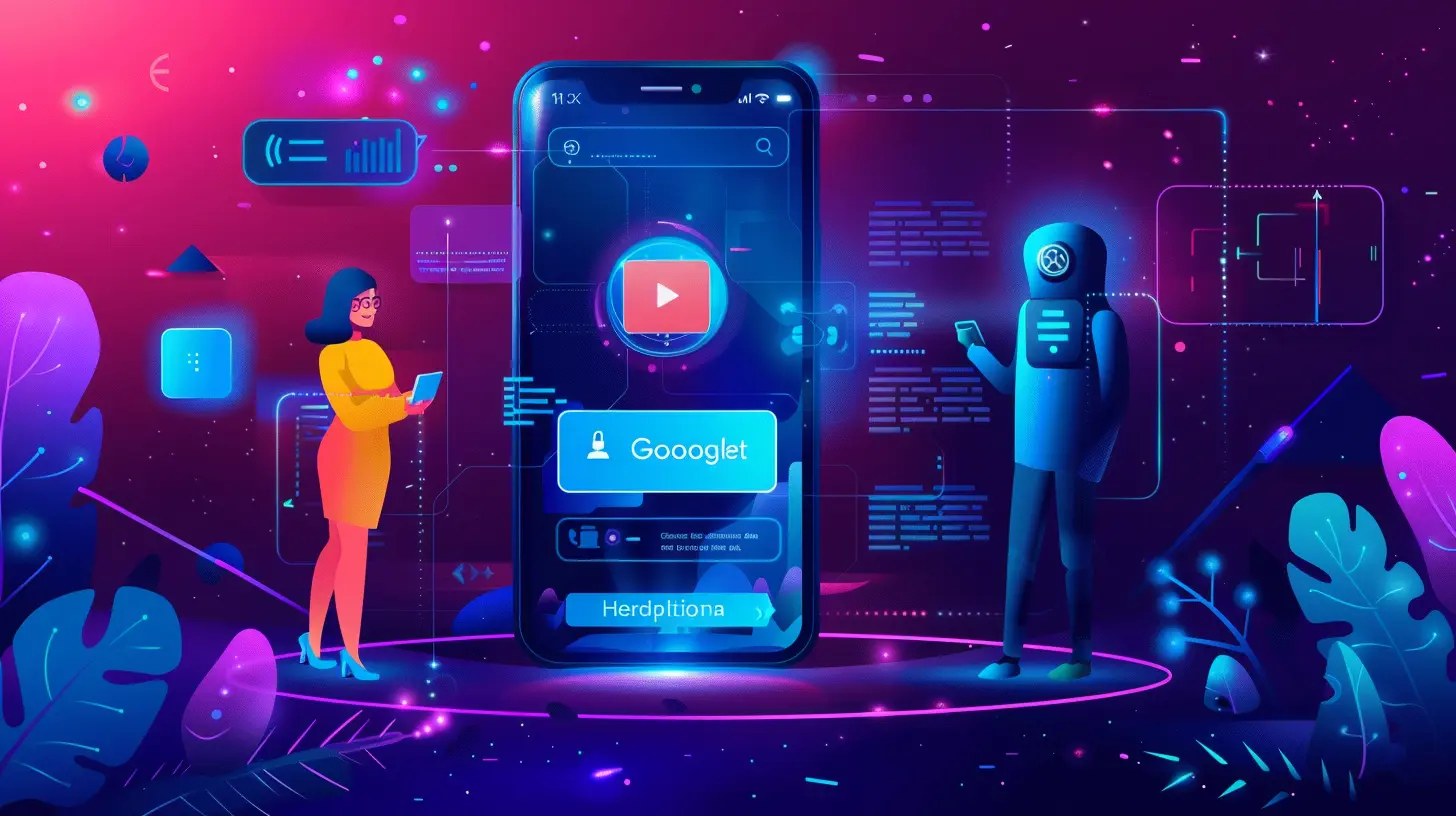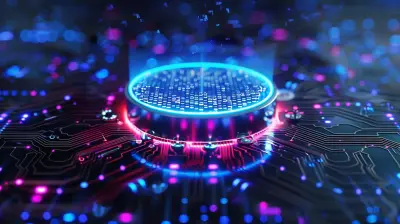Voice Assistants: What’s Next for Alexa, Siri, and Google Assistant
8 November 2025
So, let’s be real here. Voice assistants have come a long way since their clunky, robotic beginnings. Once reserved for checking the weather or setting a simple reminder, Alexa, Siri, and Google Assistant are now baked into our smartphones, smart homes, cars, wearables—and even our fridges. But that begs the question: what’s next?
Are we on the verge of a voice assistant revolution? Or are Alexa, Siri, and Google Assistant just going to become smarter versions of the same thing? Let’s take a closer look at where we are now, the innovations just around the corner, and how these little digital helpers are shaping the future.
Where Voice Assistants Stand Today
Before we talk about the future, let's do a quick check-in on where voice assistants currently are.- Alexa is Amazon’s brainchild, deeply integrated with the Echo lineup and dominating the smart home space.
- Siri, Apple’s OG voice assistant, is the go-to for iPhone users and works hand-in-hand with Apple’s ecosystem.
- Google Assistant shines with impressive language comprehension and the power of Google’s search engine behind it.
They’re all capable of handling tasks like:
- Setting alarms and timers
- Controlling smart home devices
- Answering general knowledge questions
- Playing music and podcasts
- Making shopping lists
- Sending texts and placing calls
But come on, we want more than that, right? Especially in a world where AI is moving at lightspeed.
Smarter Conversations: Moving Beyond Simple Commands
Right now, most interactions with voice assistants follow a pretty basic pattern. You say a command, it does the job. Simple. But the next step? It’s all about natural conversation.Imagine chatting with Siri like you do with a friend. No more saying “Hey Siri” every time. No more repeating the same sentence three different ways just to get an answer.
Context Awareness
The future is all about context. Voice assistants will understand what you’re talking about based on things like:- Your previous questions
- The time of day
- Your location
- Your calendar and routines
For example, ask Google Assistant, “What’s the weather like tomorrow?” and then follow up with “Will I need an umbrella?” It should know you’re still talking about tomorrow’s weather. That’s the kind of seamless interaction developers are aiming for.
Multimodal Interactions: More Than Just Voice
Let’s face it—sometimes talking out loud isn’t ideal (like when you're in the library or your baby just fell asleep). That’s where multimodal interactions come in.The idea is simple: you should be able to interact with your assistant using voice, touch, text, and even gestures.
Alexa on your Echo Show already gives you a taste of this, where you speak and it shows you visual info. But down the line, we’ll be seeing an even tighter blend. Think of your assistant understanding your facial expressions, hand gestures, or even your tone of voice (yikes, emotional intelligence for AI? Yep, that’s happening).
Hyper-Personalization: Tailored Just for You
In the not-so-distant future, your voice assistant won’t just be a helpful tool—it’ll be your personalized digital sidekick.We’re talking about AI that learns deeply from your habits and preferences. Like:
- Suggesting dinner recipes based on what’s in your fridge
- Reminding you to call your mom because it’s been a week and she’ll totally guilt-trip you
- Prepping your smart home for sleep when it detects you’re winding down
Voice Cloning & Recognition
What if your assistant could not only recognize your voice but differentiate between different people in your household too? That’s already in motion.Voice recognition allows assistants to tailor responses based on who's talking. But it won’t stop there. With voice cloning, your assistant could someday respond in a voice that’s familiar—or even your own. Kinda creepy? Maybe. Super cool? Definitely.
AI-Powered Upgrades: Deep Learning Gets Deeper
The real power behind the evolution of voice assistants? AI and machine learning.Big tech is investing billions into natural language processing (NLP) and deep learning models that make these tools smarter by the day. This means your assistant could soon:
- Answer complex multi-layered questions
- Understand multiple languages or dialects in a single conversation
- Predict your needs before you voice them
Imagine this: You’re driving home, and your assistant says, “You’re passing by your favorite Thai restaurant. Want me to place your usual order?” Boom—life just got easier.
Voice Assistants in Your Daily Life: Going Beyond the Home
Let’s talk real-world use. Voice assistants are no longer just a kitchen counter accessory. They’re showing up everywhere.In Cars
Google Assistant and Alexa are integrated into car systems like Android Auto and Amazon’s Echo Auto. They’re helping with navigation, calls, texts, and even controlling smart devices back home before you arrive.In Wearables
Think Apple Watch and Google’s Pixel Watch—Siri and Google Assistant are literally on your wrist now. Super useful for setting reminders during a jog or checking notifications on the fly.In Healthcare
Voice assistants are now helping with:- Medication reminders
- Health tracking
- Telehealth appointment scheduling
- Even aiding seniors with daily tasks
This is a game-changer for accessibility and elderly care.
Privacy & Security: The Elephant in the Room
It’s not all sunshine and rainbows, though.One of the biggest concerns? Privacy. Let’s be honest—nobody likes the idea of their voice assistant eavesdropping. Remember those stories of Alexa randomly laughing or recording conversations? Yeah, not great.
Tech companies say they’re making privacy a top priority. Some improvements include:
- Local processing (data stays on your device, not the cloud)
- Opt-in features for voice recordings
- Transparent data policies
But at the end of the day, we as users need to stay informed and cautious. Don’t share sensitive info via voice unless you trust the platform 100%.
The Rise of Ambient Computing
Here’s a future-forward concept: Ambient Computing. It’s a fancy term, but the idea is pretty cool.Basically, the tech blends into the background. You don’t actively “use” it—it’s just there, helping, listening, responding, without you even noticing.
Your TV dims the lights when your assistant senses it’s movie time. Your air conditioner turns on as you pull into the driveway. Your fridge adds milk to your shopping list when it's running low. That’s ambient computing—and voice assistants are going to be its main control hub.
Competitive Landscape: Who’s Leading the Charge?
Now for the juicy part—who’s winning this race?Amazon Alexa
Amazon wants Alexa to be the king of the smart home. With its massive lineup of Echo devices, Alexa is everywhere. Alexa’s strength lies in its Skills, which are like apps that let you do everything from ordering pizza to playing trivia.But recently, Amazon’s been shifting focus to AI-driven proactive assistance, aiming to make Alexa less reactive and more anticipatory.
Apple Siri
Siri was one of the first, but let’s face it, Apple’s been a bit... conservative with its updates. That said, they’re playing the long game. With their tight ecosystem and focus on privacy-first AI, Siri could make a big comeback, especially if Apple decides to go all-in with generative AI integrations.Google Assistant
Let’s not sugarcoat it—Google Assistant is arguably the smartest of the bunch when it comes to context, search capability, and understanding intent. It’s scary good.Plus, Google is integrating AI across its entire suite of services, so Assistant is becoming deeply intertwined with apps like Gmail, Maps, Calendar, and more. That makes it a heavy hitter in the productivity space.
Generative AI + Voice: The Future is Talking Back
Let’s talk about the elephant-sized AI in the room—generative AI like ChatGPT, Claude, and Google's own Bard. Voice assistants are gearing up to merge with this level of intelligence.Imagine asking Siri to write a quick email for you and it sounds better than anything you’ve ever written. Or telling Google Assistant to summarize a meeting based on your calendar and voice notes—then getting a pitch-perfect summary.
That’s the next step: Voice Assistants powered by conversational AI that don't just follow commands—they collaborate with you.
It’s like going from a walkie-talkie to a full-on personal consultant.
The Roadblocks Ahead
Let’s not kid ourselves. It’s not all smooth sailing.- Privacy concerns still loom large
- Data security must keep up with smarter capabilities
- Hardware limitations—many of these devices still need better processing power for on-device AI
- User adoption—a good chunk of people still don’t use voice assistants regularly, either due to skepticism or just not seeing the value yet
But the potential? It’s massive.
Final Thoughts: Your Voice, Your Future
So what’s next for Alexa, Siri, and Google Assistant?In short, a lot.
From smarter conversations and hyper-personalization to ambient AI and generative tech partnerships, the future of voice assistants is buzzing with possibilities. They’ll become more intuitive, more helpful, and more human-like than ever before.
Whether you’re a power user or someone who’s yet to fully trust a talking speaker in your home, one thing’s certain—voice assistants aren’t just a passing trend. They’re evolving—and fast.
Your voice is becoming your most powerful interface. Might as well start using it.
all images in this post were generated using AI tools
Category:
Emerging TechnologiesAuthor:

Vincent Hubbard
Discussion
rate this article
1 comments
Corinne Thompson
This article beautifully captures the evolution of voice assistants. Excited to see how Alexa, Siri, and Google Assistant will continue to enhance our daily lives in the future!
November 10, 2025 at 5:59 AM

Vincent Hubbard
Thank you! I'm excited too to see how these voice assistants will shape our future lives!


